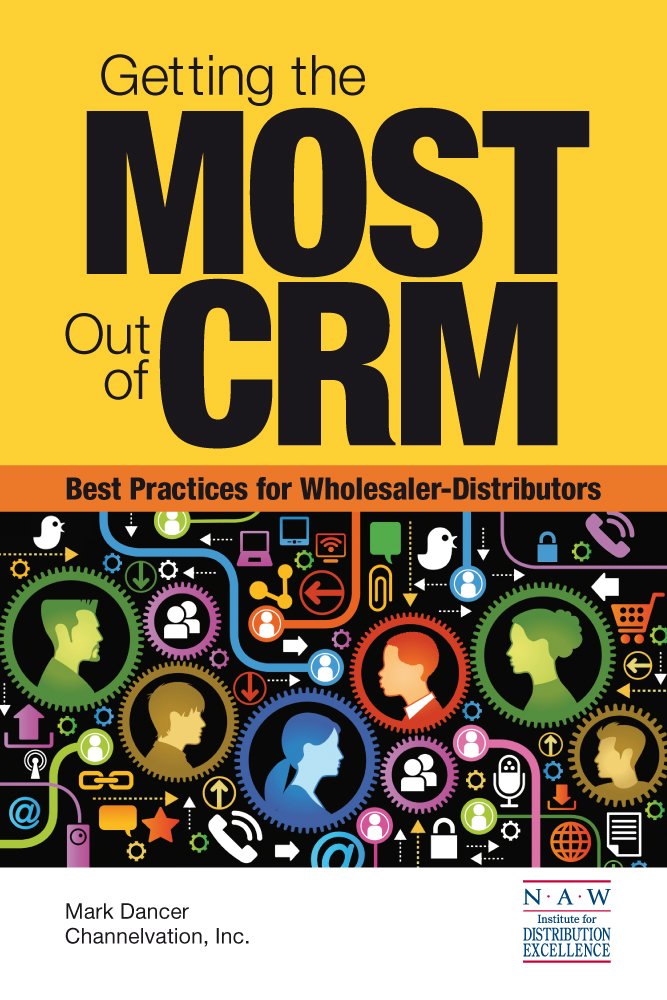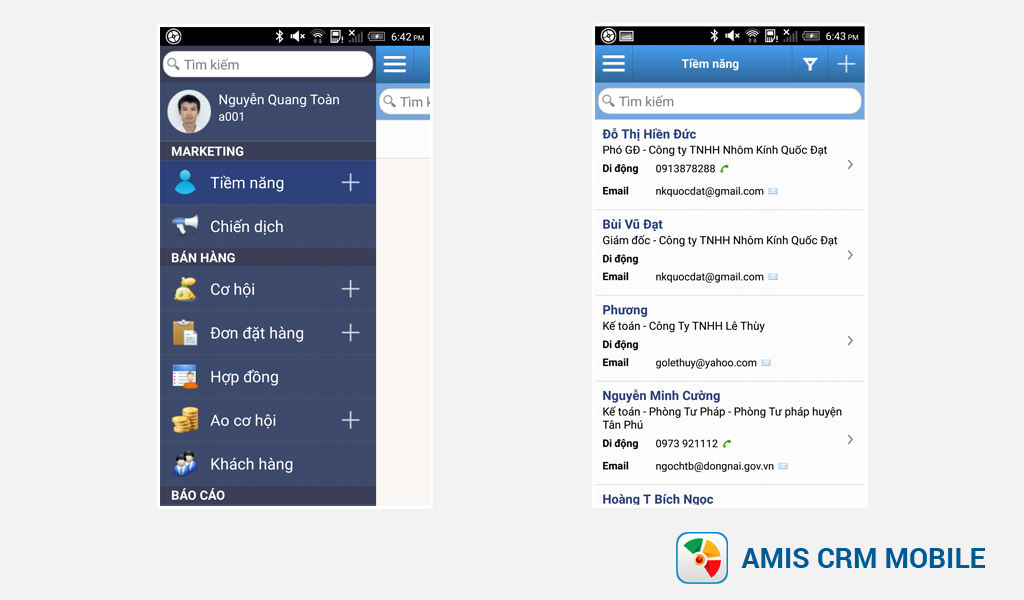Customer relationship management (CRM) is an approach to managing a company's interaction with current and future customers. It often involves using technology to organize, automate, and synchronize sales, marketing, customer service, and technical support.

Characteristics
CRM is a customer-oriented feature with service response based on customer input, one-to-one solutions to customers' requirements, direct online communications with customer and customer service centers that are intended to help customers solve their issues. It includes the following functions:
- Sales force automation, which implements sales promotion analysis, automates the tracking of a client's account history for repeated sales or future sales, and ?oordinates sales, marketing, call centers, and retail outlets.
- Data warehouse technology, used to aggregate transaction information, to merge the information with CRM products, and to provide key performance indicators.
- Opportunity management which helps the company to manage unpredictable growth and demand, and implement a good forecasting model to integrate sales history with sales projections.
- CRM systems that track and measure marketing campaigns over multiple networks, tracking customer analysis by customer clicks and sales.
How To Use A Crm Video
Impact on customer satisfaction
According to Bolton, customer satisfaction has significant implications for the economic performance of firms, because it has been found to increase customer loyalty and usage behavior and reduce customer complaints, and the likelihood of customer defection.
The implementation of CRM is likely to have an effect on customer satisfaction for at least three reasons:
Firstly, firms are able to customize their offerings for each customer. By accumulating information across customer interactions and processing this information to discover hidden patterns, CRM applications help firms customize their offerings to suit the individual tastes of their customers. This customization enhances the perceived quality of products and services from a customer's viewpoint, and because perceived quality is a determinant of customer satisfaction, it follows that CRM applications indirectly affect customer satisfaction.
Secondly, CRM applications enable firms to provide timely, accurate processing of customer orders and requests and the ongoing management of customer accounts. For example, Piccoli and Applegate (2003) discuss how Wyndham uses IT tools to deliver a consistent service experience across its various properties to a customer. Both an improved ability to customize and a reduced variability of the consumption experience enhance perceived quality, which in turn positively affects customer satisfaction.
Thirdly, CRM applications also help firms manage customer relationships more effectively across the stages of relationship initiation, maintenance, and termination.

Types
Call centers
As well as tracking, recording and storing customer information, CRM systems in call centers codify the interactions between company and customers by using analytics and key performance indicators to give the users information on where to focus their marketing and customer service. The intention is to maximize average revenue per user, decrease churn rate and decrease idle and unproductive contact with the customers. CRM software can also be used to identify and reward loyal customers over a period of time.
Growing in popularity is the idea of gamifying customer service environments. The repetitive and tedious act of answering support calls all day can be draining, even for the most enthusiastic customer service representative. When agents are bored with their work, they become less engaged and less motivated to do their jobs well. They are also prone to making mistakes. Gamification tools can motivate agents by tapping into their visceral need for reward, status, achievement, and competition.
Business-to-business
According to a Sweeney Group definition, CRM is "all the tools, technologies and procedures to manage, improve, or facilitate sales, support and related interactions with customers, prospects, and business partners throughout the enterprise". It assumes that CRM is involved in every B2B transaction.
Despite the general notion that CRM systems were created for the customer-centric businesses, they can also be applied to B2B environments to streamline and improve customer management conditions. For the best level of CRM operation in a B2B environment, the software must be personalized and delivered at individual levels.
The main differences between B2C and B2B CRM systems are as follows:
- B2B companies have smaller contact databases than B2C.
- The volume of sales in B2B is relatively small.
- In B2B there are less figure propositions, but in some cases they cost a lot more than B2C items.
- Relationships in B2B environment are built over a longer period of time.
- B2B CRM must be easily integrated with products from other companies. Such integration enables the creation of forecasts about customer behavior based on their buying history, bills, business success, etc.
- An application for a B2B company must have a function to connect all the contacts, processes and deals among the customers segment and then prepare a paper.
- Automation of sales process is an important requirement for B2B products. It should effectively manage the deal and progress it through all the phases towards signing.
- A crucial point is personalization. It helps the B2B company to create and maintain strong and long-lasting relationship with the customer.
Social media
Balaram (2010) presented evidence of a significant increase in the use of social networking sites, especially among young people. This has caused companies to use these sites to draw attention to their products, services and brands, with the aim of building up customer relationships to increase demand.
Some CRM systems integrate social media sites like Twitter, LinkedIn and Facebook to track and communicate with customers sharing their opinions and experiences with a company, products and services.
Enterprise Feedback Management software platforms such as Confirmit, Medallia, and Satmetrix combine internal survey data with trends identified through social media to allow businesses to make more accurate decisions on which products to supply.
Other types
Some CRM software is available as a software as a service (SaaS), delivered via the internet and accessed via a web browser instead of being installed on a local computer. Businesses using the software do not purchase it, but typically pay a recurring subscription fee to the software vendor.
For small businesses a CRM system may consist of a contact manager system which integrates emails, documents, jobs, faxes, and scheduling for individual accounts. CRM systems available for specific markets (legal, finance) frequently focus on event management and relationship tracking as opposed to financial return on investment (ROI).
Customer-centric relationship management (CCRM) is a nascent sub-discipline that focuses on customer preferences instead of customer leverage. CCRM aims to add value by engaging customers in individual, interactive relationships.
Systems for non-profit and membership-based organizations help track constituents, fund-raising, Sponsors demographics, membership levels, membership directories, volunteering and communication with individuals.

Adoption issues
In 2003, a Gartner report estimated that more than $2 billion had been spent on software that was not being used. According to CSO Insights, less than 40 percent of 1,275 participating companies had end-user adoption rates above 90 percent. Many corporations only use CRM systems on a partial or fragmented basis.
In a 2007 survey from the UK, four-fifths of senior executives reported that their biggest challenge is getting their staff to use the systems they had installed. 43 percent of respondents said they use less than half the functionality of their existing systems. Recently, it was found in a study that market research regarding consumers' preferences may increase the adoption of CRM among the developing countries' consumers.

CRM Paradox
The CRM Paradox, also referred to as the "Dark side of CRM", entails favoritism and differential treatment of some customers. This may cause perceptions of unfairness among other customers' buyers. They may opt out of relationships, spread negative information, or engage in misbehavior that may damage the firm. CRM fundamentally involves treating customers differently based on the assumption that customers are different and have different needs. Such perceived inequality may cause dissatisfaction, mistrust and result in unfair practices. A customer shows trust when he bonds in a relationship with a firm when he knows that the firm is acting fairly and adding value. However, customers may not trust that firms will be fair in splitting the value creation pie in the first place. For example, Amazon's test use of dynamic pricing (different prices for different customers) was a public relations nightmare for the company.

Market leaders
The CRM market grew by 12.5 percent in 2012. The following table lists the top vendors in 2006-2008 and 2012-2014 (figures in millions of US dollars) published in Gartner studies.

Trends
In the Gartner CRM Summit 2010 challenges like "System tries to capture data from social networking traffic like Twitter, handles Facebook page addresses or other online social networking sites" were discussed and solutions were provided that would help in bringing more clientele. Many CRM vendors offer subscription-based web tools (cloud computing) and SaaS. Some CRM systems are equipped with mobile capabilities, making information accessible to remote sales staff. Salesforce.com was the first company to provide enterprise applications through a web browser, and has maintained its leadership position. Salesforce continues to be a market leader as the CRM with the most customers and is rated-highly among their customers.
Traditional providers have recently moved into the cloud-based market via acquisitions of smaller providers: Oracle purchased RightNow in October 2011 and SAP acquired SuccessFactors in December 2011.
The era of the "social customer" refers to the use of social media (Twitter, Facebook, LinkedIn, Google Plus, Pinterest, Instagram, Yelp, customer reviews in Amazon, etc.) by customers. CR philosophy and strategy has shifted to encompass social networks and user communities.
Sales forces also play an important role in CRM, as maximizing sales effectiveness and increasing sales productivity is a driving force behind the adoption of CRM. Empowering sales managers was listed as one of the top 5 CRM trends in 2013.
Another related development is vendor relationship management (VRM), which provide tools and services that allow customers to manage their individual relationship with vendors. VRM development has grown out of efforts by ProjectVRM at Harvard's Berkman Center for Internet & Society and Identity Commons' Internet Identity Workshops, as well as by a growing number of startups and established companies. VRM was the subject of a cover story in the May 2010 issue of CRM Magazine.
In 2001, Doug Laney from Gartner developed the concept and coined the term 'Extended Relationship Management' (XRM). Laney defines XRM as extending CRM disciplines to secondary allies such as the government, press and industry consortia.
Dennison DeGregor (2011) describes a shift from 'push CRM' toward a 'customer transparency' (CT) model, due to the increased proliferation of channels, devices, and social media.
Are You Looking for Products
Here some products related to "Customer Relationship Management".
Getting the Most Out of C..
AMIS CRM: Appstore for An..
AMIS CRM: Appstore for An..
AMIS CRM: Appstore for An..
Get these at Amazon.com* amzn.to is official short URL for Amazon.com, provided by Bitly
Source of the article : here






2 komentar
You gave good information about using a crm. Everyone should be informed of the benefits of entering information into the CRM system to encourage its usage. I used Onsite CRM for my business and i found that this software is totally secure system is easy to use.
This is really awesome information providing, Salesforce Staffing Services. Thanks
EmoticonEmoticon